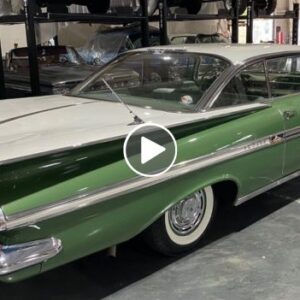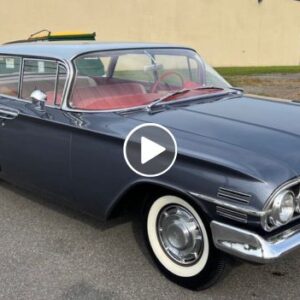The 1973 Dodge Charger is a classic American muscle car that has captured the hearts of automotive enthusiasts worldwide. With its distinctive design, powerful performance, and storied history, the ’73 Charger remains a sought-after collector’s item and an iconic symbol of American automotive culture.
Design Evolution of the 1973 Dodge Charger
The Dodge Charger first entered the automotive scene in 1966, and it experienced several design changes throughout its production run. The 1973 model year marked the beginning of the third generation of Chargers, which featured a more rounded and aerodynamic body style compared to its predecessors. This new design direction was influenced by the increasing importance of fuel efficiency and the need to comply with safety regulations, which prompted many automakers to revise their vehicle designs.
One of the key changes in the 1973 Dodge Charger’s design was the incorporation of a new front end, including a revised grille and larger, more prominent headlights. The grille featured a more aggressive, split design that helped to distinguish the Charger from other vehicles in the Dodge lineup. Additionally, the front bumper was designed to meet new federal safety standards, resulting in a more substantial and robust appearance.
The rear end of the 1973 Charger also received a makeover, with a redesigned bumper and new taillights that emphasized the car’s width and added to its commanding presence. The overall body shape was more rounded and streamlined, contributing to improved aerodynamics and fuel efficiency.
Inside the 1973 Charger, the interior was updated with new materials and improved ergonomics. The dashboard layout was revised to provide better visibility and easier access to controls, while the seats were redesigned to offer increased comfort and support.
Performance and Engine Options for the 1973 Dodge Charger
The 1973 Dodge Charger was available with a variety of engine options, allowing buyers to choose the level of performance that best suited their needs. While the new emissions regulations and fuel economy concerns of the early 1970s led to a decrease in overall horsepower for many muscle cars, the Charger still offered some potent engine choices.
The base engine option for the 1973 Charger was the 225-cubic inch (3.7-liter) Slant-6, which produced 105 horsepower. This engine provided adequate power for everyday driving, but it was not the choice for performance enthusiasts.
For those seeking more power, the 1973 Dodge Charger offered several V8 engine options. The 318-cubic inch (5.2-liter) V8 produced 150 horsepower, while the 340-cubic inch (5.6-liter) V8 generated 240 horsepower. Both engines provided a significant boost in performance compared to the base Slant-6.
The top-of-the-line engine option for the 1973 Charger was the 400-cubic inch (6.6-liter) V8, which was available in two versions. The first version, equipped with a 2-barrel carburetor, produced 260 horsepower, while the second version, featuring a 4-barrel carburetor, generated an impressive 280 horsepower. The 400-cubic inch V8 offered the best performance capabilities for the 1973 Charger and was the choice for those seeking the true muscle car experience.
The 1973 Dodge Charger was available with either a 3-speed automatic or 4-speed manual transmission, depending on the engine option selected.
Charger Models and Trim Levels
The 1973 Dodge Charger was offered in three different models: the base Charger, the Charger SE (Special Edition), and the Charger Rallye. Each model featured its unique set of features and options, catering to a wide range of preferences and budgets.
The base Charger model was the most affordable option, featuring standard equipment such as an AM radio, front disc brakes, and the Slant-6 engine. Buyers could also choose from a range of optional features, including air conditioning, power steering, and various engine upgrades.
The Charger SE was a more luxurious offering, featuring standard equipment such as a vinyl roof, plush interior materials, and additional exterior trim. The SE model also offered a range of optional features, including a power sunroof, power windows, and an upgraded stereo system.
The Charger Rallye was the performance-oriented model, featuring the 340-cubic inch V8 engine as standard equipment and offering the 400-cubic inch V8 as an option. The Rallye also included a heavy-duty suspension, front and rear sway bars, and unique exterior graphics, emphasizing its performance capabilities.
The Legacy of the 1973 Dodge Charger
The 1973 Dodge Charger is remembered as a stylish and powerful muscle car that represents a transitional period in American automotive history. As the industry adjusted to new regulations and consumer preferences, the Charger’s design and performance capabilities evolved to meet these changingdemands. Despite the challenges faced by the muscle car segment during this time, the ’73 Charger managed to maintain its appeal and iconic status.
The Charger’s legacy has been preserved through its appearances in popular culture, including movies, television shows, and video games. For example, the 1973 Dodge Charger has been featured in the “Fast and Furious” film franchise, which has helped introduce the car to new generations of automotive enthusiasts.
In addition to its presence in popular culture, the 1973 Dodge Charger remains a popular choice for collectors and muscle car enthusiasts. The distinctive design and performance capabilities of the ’73 Charger continue to attract attention at car shows and auctions, with well-preserved examples commanding high prices.
The 1973 Dodge Charger’s enduring popularity is also reflected in the thriving community of Charger enthusiasts, who share their passion for the car through online forums, social media groups, and local car clubs. These communities provide valuable resources for Charger owners, including technical advice, restoration tips, and opportunities to connect with fellow enthusiasts.
Racing Heritage
The 1973 Dodge Charger also has a rich history in the world of motorsports, particularly in NASCAR. The Charger’s aerodynamic design and powerful engine options made it a formidable contender on the racetrack. Throughout the 1970s, the Dodge Charger competed in NASCAR’s premier Winston Cup Series (now known as the NASCAR Cup Series), earning multiple victories and solidifying its reputation as a high-performance machine.
Notable drivers who piloted the Charger during this era include Richard Petty, Bobby Allison, and Buddy Baker. Richard Petty, also known as “The King,” won several races in a 1973 Dodge Charger, contributing to his legendary career total of 200 NASCAR victories. The racing success of the Charger helped boost its popularity among performance enthusiasts, further enhancing its status as an iconic American muscle car.
Aftermarket Support and Customization
The enduring popularity of the 1973 Dodge Charger has resulted in a thriving aftermarket industry, with numerous companies offering parts and services to help owners maintain, restore, and customize their vehicles. Enthusiasts can find a wide range of replacement parts, from original equipment manufacturer (OEM) components to aftermarket upgrades, ensuring that the ’73 Charger can continue to be enjoyed and preserved for years to come.
In addition to replacement parts, the aftermarket industry also offers a variety of performance upgrades for the 1973 Charger. These upgrades can include engine modifications, suspension enhancements, brake upgrades, and more, allowing owners to tailor their vehicle’s performance to their preferences. Customization options, such as aftermarket wheels, body kits, and interior accessories, can further personalize the Charger, making it a unique expression of the owner’s taste and style.
For those interested in restoring or modifying a 1973 Dodge Charger, there is an abundance of resources available online, including tutorials, forums, and videos. These resources can help guide enthusiasts through the process of restoration and customization, whether they are undertaking a full, frame-off restoration or simply making a few minor upgrades to improve performance and appearance.
Impact on Modern Dodge Chargers
The legacy of the 1973 Dodge Charger and its predecessors can still be seen in the modern iterations of the Charger nameplate. The current Dodge Charger, which was reintroduced in 2006, draws inspiration from the classic muscle car era, featuring aggressive styling, rear-wheel drive, and a range of powerful engine options.
While the modern Charger has evolved to meet the demands of today’s automotive market, it still embodies the spirit of the original 1973 model, offering performance enthusiasts a thrilling driving experience and a connection to the iconic history of American muscle cars.
In conclusion, the 1973 Dodge Charger represents an important chapter in the history of American muscle cars. With its distinctive design, powerful engine options, and variety of available models and trim levels, the ’73 Charger has earned its place in the hearts of car enthusiasts worldwide. As the automotive industry continues to evolve, the legacy of the 1973 Dodge Charger serves as a testament to the enduring appeal of classic muscle cars and their impact on American automotive culture.





